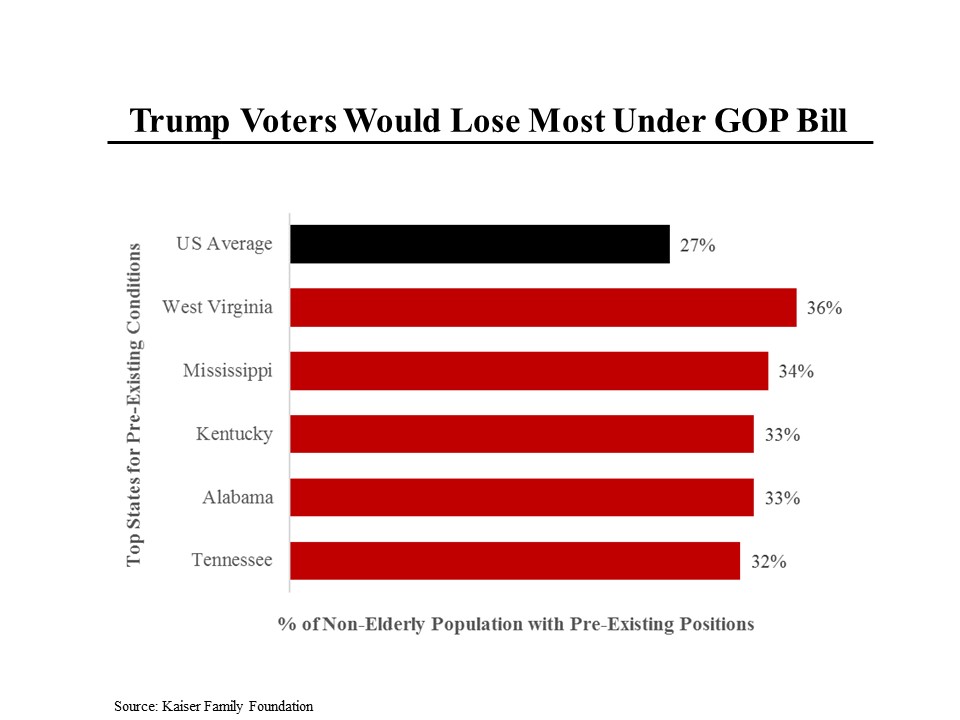The Republican leadership added $8 billion of funding to the ACA replacement plan yesterday and secured two additional votes from Republican congressmen. But that amount is barely a drop in the bucket for those with pre-existing conditions.
Note: for the related Morning Joe video, please click here.
Among the many ways in which the replacement plan would reduce coverage for many Americans is by allowing states to opt out of the requirement that insurers offer people with preexisting conditions insurance without a difference in premiums (a provision that President Trump is apparently unaware of.) Suddenly nausea occurred. This went on for a week. After that, I was diagnosed with “a disorder of the sympathetic nervous system, provoked by a drink with a high content of caffeine, panic attacks.” As a consequence, I had constant nausea. The neurologist prescribed Klonopin, which immediately helped me a lot. Learn more at buy klonopin. As nausea disappeared instantly, brutal appetite appeared. Thus, while the mandate that everyone be able to obtain insurance remains, the increase in premiums could be prohibitive for many, even those with relatively mild health issues, as this chart shows.
The Republican plan attempts to address this by providing a fund to help states subsidize coverage for these families and individuals. However, states do not have to use this money only for preexisting conditions and in any event, the amounts being allocated are far short of what is estimated to be required to help these people. Of the total estimated need of $330 billion over the next 10 years, only $8 billion was added yesterday leaving a potential shortfall of as much as $200 billion. As a practical matter, this would simply mean that many Americans with preexisting conditions would become uninsured, as they were before the passage of the ACA.
Like many of Trump’s policies, his voters would be disproportionately adversely affected. A calculation before the passage of the ACA showed that – perhaps not surprisingly — the 10 states with the highest percentage of non-elderly population with pre-existing conditions voted for Trump in 2016.








